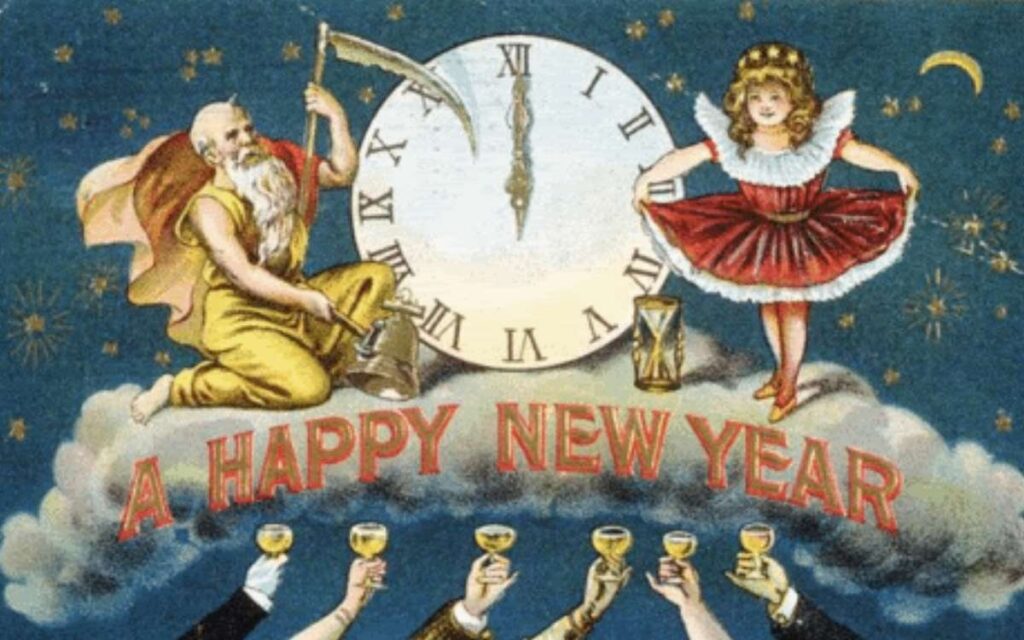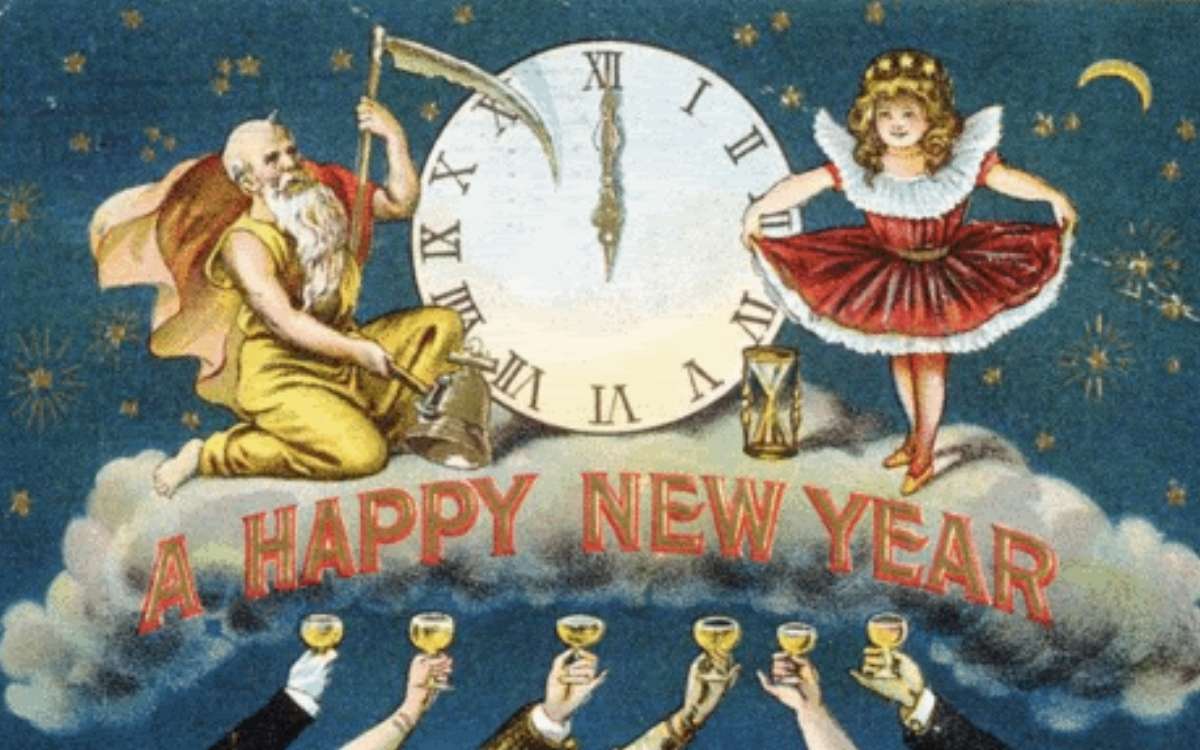CHRISTINE MILLER tells us some of Britain’s strangest New Year’s Traditions and Superstitions…

For a country so rich in folklore and oral history, it’s little wonder that we in the UK have so many unique and varied customs surrounding the coming of a new year. Here are 5 New Year’s traditions and superstitions from around our weird and wonderful nation.
First Footing
First footing is still a common tradition practised mainly in Scotland but has extended to other parts of the UK too – namely parts of the North of England and Wales. It is said that the “first foot” in the door after midnight should be that of a dark-haired man, in the interests of good luck and prosperity.
It’s believed this tradition goes back to ancient times when those with fair hair would not be considered the most welcome of guests after the Viking invasion.
A blond bloke angrily swinging an axe at your door was considered, understandably, somewhat of a bad omen back in the day.
Ideally, the first-footer should bring with him coal, bread, salt and whiskey; each of which symbolises warmth, ample crops, wealth and good health.
Mari Lwyd
Mari Lwyd (most often translated as Grey Mare) hails all the way back from the pre-Christian era in Wales. Although the date when the tradition of Mari Lwyd was carried out varied from village to village, it was more commonly executed around New Year.
The Mari Lwyd was a horse’s skull enveloped in a white cloth and decorated with ribbons, false eyes and ears. Affixed to a long wooden pole, the Man Lwyd would be paraded by a gang of males from house to house. Insults and jokes would be strewn at those who greeted the group at their door.
The men would request access through song, with the householders denying entry in a similar fashion. This would go back and forward until the homeowner relented; at which point, the gang would be welcomed in to feast on food and drink.
Long from being a dead tradition, many variations of the Mari Lwyd folk custom still exist today in various Welsh villages.
Saining
Still practised today in parts of the Scottish Highlands, saining – meaning blessing – is a ritual that traditionally takes place on New Year’s Day morning.
It is carried out by consuming “magic” water; that is, water that has been specially sourced from a river where legend has it, both the living and the dead cross. This water is also sprinkled diligently throughout the household and its entire content.
Next, a deep cleanse of the household is carried out by burning juniper branches. The smoke, it is believed, will drive any nefarious ill-meaning spirits away.
Finally, all the windows and doors are opened to welcome in the fresh New Year’s air. An obligatory whisky is consumed before the householders indulge in a customary full Scottish breakfast.
To Clean or Not to Clean?
Many people find themselves busily tidying and clearing out their homes before New Year. While this has practical implications after a busy Christmas season when a deep clean is required, the practice has its roots in the old-time British tradition of cleansing the home for the New Year ahead.
It is also believed that by having a clean home, you will leave behind any of the bad luck you may have encountered in the course of the previous year and face a fresh year of fortuity and happiness.
However, some believe that this tradition can actually incur bad fortune, in that you can sweep or clean any good luck for the coming year away.
Auld Lang Syne
A list of New Year traditions would not be complete without mentioning Auld Lang Syne; yes, that famous poem-turned-song that none of us actually know all the words to.
Written by Scottish poet Robert Burns in 1788, the song has come to symbolise reunion, remembrance and reconciliation of the old year while moving forward with optimism and friendship. The song is now sung not just throughout Scotland and the UK at the stroke of midnight but has become a focal symbol of New Year’s Eve throughout many countries across the world.
Honourable Mentions: A Few Other Weird and Wonderful New Year’s Eve Traditions and Superstitions
- In Yorkshire, it is customary to proclaim: “black rabbits, black rabbits, black rabbits”, and then, as the clock chimes midnight, say “white rabbits, white rabbits, white rabbits”. All in the name of good luck.
- As a mark of respect to honour the dead, throughout Ireland, an extra place at the table is often layed out at New Year.
- In Northumberland, large whiskey barrels are filled with burning tar, kindling and sawdust and marched throughout town.
- In areas of Wales, New Year’s gifts made out of apples are called “calennig”. These apples are mounted on a homemade tripod of twigs, and the apple is decorated with dried fruits and topped with a tree sprig.
Tell us your region’s New Year’s traditions and superstitions in the comments section below!



